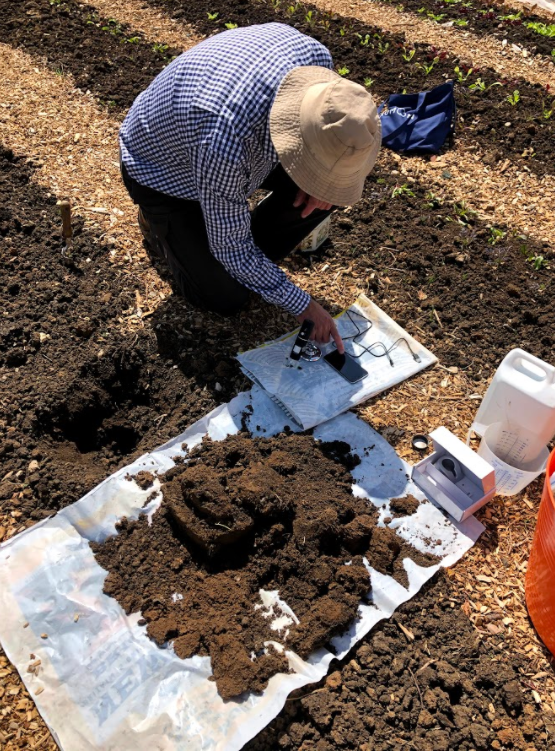
Climate action and soil carbon

Zerodig farming builds soil carbon
What’s the problem?
It is estimated that the world’s soils have lost a total of 133 billion tonnes of carbon since humans first started farming the land around 12,000 years ago. Land clearance for agriculture, modern farming methods and industrial food production account for 25% of global greenhouse gas emissions.
Western Europe and the U.S. corn-belt have experienced high levels of soil carbon loss as a result of long periods of intense crop production.
Modern agriculture causes carbon to be released from the soil at a faster rate than it is replaced. This net release of carbon to the atmosphere contributes to global warming.
The rate of carbon loss has increased significantly since the start of industrial farming. Most arable soils have lost at least half of their soil carbon.
What’s the opportunity?
Soils can be managed so that they take up more carbon from the atmosphere than they release into it.
The top two metres of the world’s soils contains two to three times more carbon than the atmosphere, making them a major carbon sink alongside forests and oceans.
Soils play a key role in the carbon cycle by storing carbon from decomposing organic matter and from plants via photosynthesis. Both the decomposition and photosynthesis pathways of soil carbon storage require micro-organisms – especially fungi – as intermediaries in the production of stable forms of soil carbon.
Managing soil to store carbon is a negative emissions approach that can help to remove CO2 from the air and contribute to dampening the impact of climate change.
The farming challenge
In practice, managing soils to reabsorb lost carbon is challenging as significant changes to agricultural practices and thinking are required. Natural ecosystems also need restoration on a large scale. And, this needs to take place within the constraint of needing to feed 10 billion people by 2050.
Possibly, the best place to start is with the world’s cultivated soils that have lost between 50 and 70 per cent of their original carbon stock, much of which has been oxidized by micro-organisms upon exposure to air to become CO2. For these soils, new knowledge about carbon sequestration, soil biology and regenerative farming techniques can help put carbon back into the soil.
Regenerative farming techniques build soil carbon while also increasing bio-diversity, boosting soil productivity and increasing resilience to floods and drought.
How does it work and what’s the science?
Through photosynthesis, a plant draws carbon out of the air to form carbon compounds. 40-60% of these carbon compounds are exuded through the plant’s roots to feed soil organisms – especially bacteria and fungi. The biotic glues secreted by these organisms create soil aggregates and stable carbon compounds that stay in the soil.
Tillage, the use of artificial fertilisers, herbicides, fungicides and pesticides much reduces – and often destroys – the ability of the soil biology to form aggregates.
Mycorrhizal fungi are key to building up stable soil carbon. Mycorrhizal fungi form symbiotic relationships with plants. Plants with mycorrhizal connections can transfer up to 15 per cent more carbon to soil than their non-mycorrhizal counterparts. They do this through thin filament-like networks of hyphae that bind soil micro-aggregates and extend the reach of a plant, increasing access to nutrients and water. These hyphae are coated with a sticky substance called glomalin, discovered only in 1996, which is instrumental in soil structure and carbon storage.
This points to fungal dominant soil biology as a driver of soil carbon storage.
What could be the impact of farming to build soil carbon?
Even at our current level of knowledge, many see great potential for storing carbon in soil. Rattan Lal of Ohio State University in the U.S. says that restoring soils of degraded and desertified ecosystems has the potential to store an additional one to three billion tonnes of carbon annually, equivalent to roughly 3.5 billion to 11 billion tonnes of CO2 emissions. Annual CO2 emissions are roughly 32 billion tonnes.
Many call Lal’s carbon soil storage figures low. This could reflect the fact that soil carbon is generally measured in the top 15-30 cm, whereas soil at depth may store carbon at much higher rates. In land with deep-rooted perennial grasses the soil can go down five meters or more securing soil carbon at depth.
Some further reading
1. See: www.pnas.org/content/early/2017/08/15/1706103114.full.pdf
2. See articles provided by Carbon Brief. In particular, see: www.carbonbrief.org/worlds-soils-have-lost-133bn-tonnes-of-carbon-since-the-dawn-of-agriculture
3. There is much written on the effect of agricultural practices with regard to the oxidation of soil carbon and its release as CO2 into the atmosphere. See for example, https://environmentalevidencejournal.biomedcentral.com/articles/10.1186/2047-2382-3-2
4. See: www.nature.com/nature/journal/vaop/ncurrent/full/nature12901.html
Recent Comments